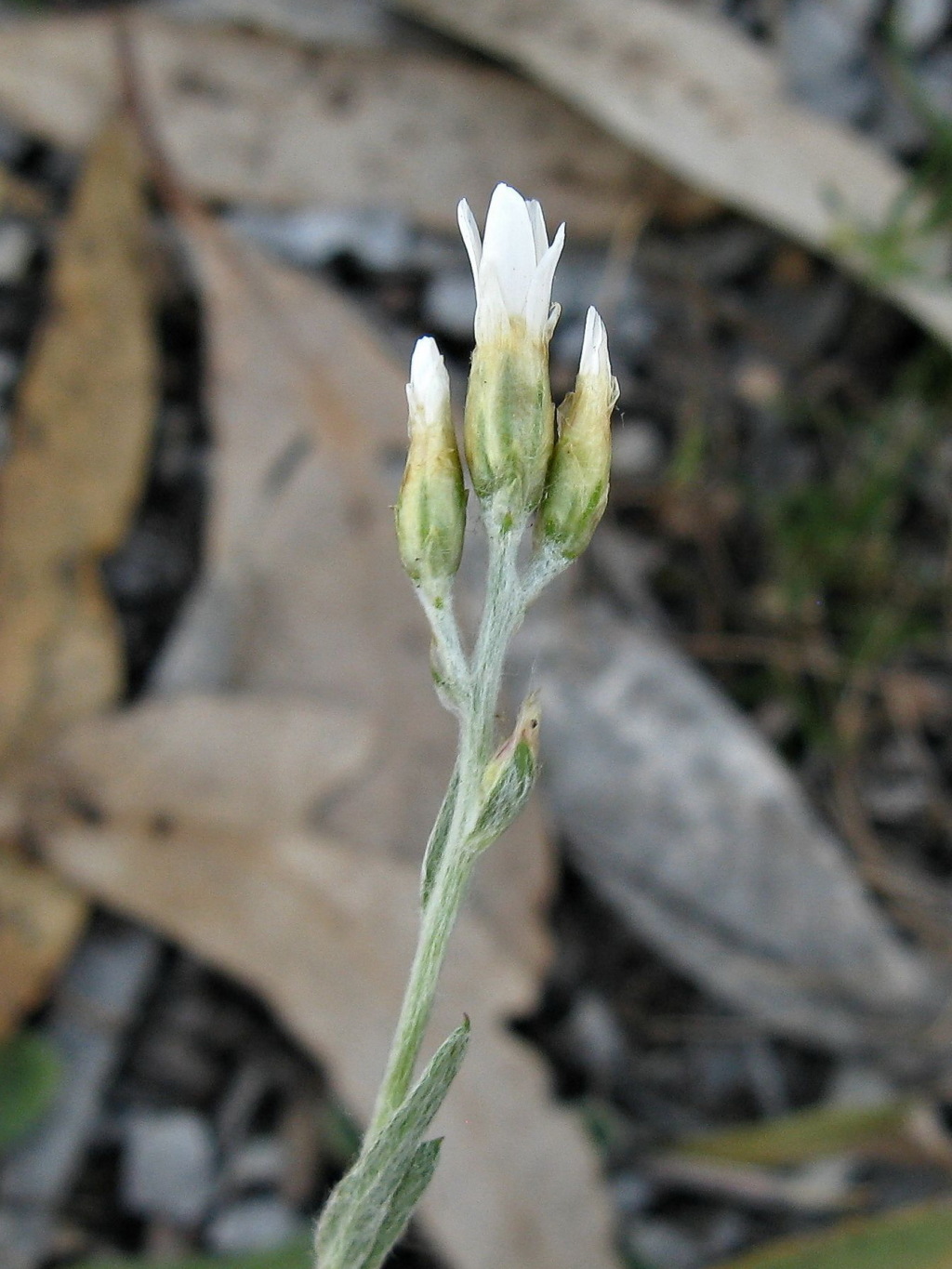Rhodanthe corymbiflora
(Schltdl.) Paul G.WilsonErect cottony annual 2–40 cm high. Leaves alternate or the lower ones opposite, linear, lanceolate or oblanceolate, 10–50 mm long, 1–6 mm wide, often somewhat subamplexicaul, greyish, with dense cottony indumentum, margins sometimes undulate. Capitula possibly homogamous, ovoid, 10–16 mm long, (3–)5–15 in loose to moderately dense corymbs or occasionally plants with a single capitulum (in diminutive plants); involucral bracts several-seriate, glabrous or with a few cottony hairs, outer bracts small, brown or yellow-brown, innermost bracts with hyaline-winged claws and spreading white laminae 5–7 mm long. Florets numerous, bisexual (innermost possibly functionally male). Cypselas c. 2.5 mm long, densely silky-hairy; pappus persistent, of c. 15 plumose bristles. Flowers Sep.–Dec.
LoM, MuM, Wim, VVP, VRiv, MSB, RobP, MuF, WaP, Gold, CVU, GGr, DunT, NIS. Also NT, SA, Qld, NSW. In Victoria a seasonally and locally common species of sandy or loamy, usually winter-wet flats or slight depressions, mostly in the north-west, but scattered through to north-central areas. A pre-1900 specimen at MEL, labelled 'Pt Fairy' is of dubious provenance.
Short, P.S. (1999). Rhodanthe. In: Walsh, N.G.; Entwisle, T.J., Flora of Victoria Vol. 4, Cornaceae to Asteraceae, pp. 752–757. Inkata Press, Melbourne.
 Spinning
Spinning

